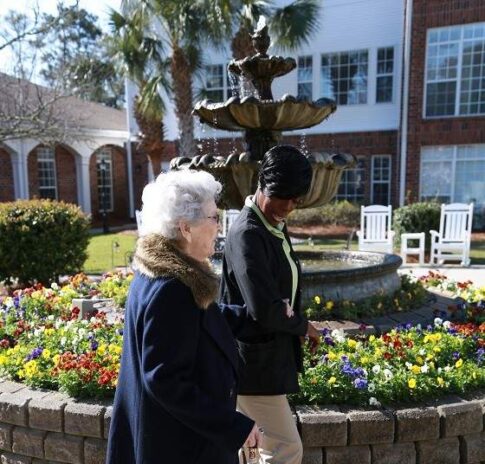September focuses on Falls Prevention and Emergency Preparedness
If you’re a family caregiver, you may, at some point, need to handle an unexpected situation when it comes to your loved one. It could be anything from helping them stay safe during a natural disaster to helping them heal after a serious fall. Family caregivers should have a plan in place to help in emergency situations. At the very least, they should have a conversation with the person they’re caring for about the potential risks and what they can do to be prepared.
If you or someone you know is a family caregiver, this quick guide to falls prevention and emergency preparedness can help keep your aging loved one safe inside the place they call home.
Preventing falls
Falls are the leading cause of fatal and non-fatal injuries for older Americans, according to the National Council on Aging. They can result in hip fractures, cuts, and even serious head and brain injuries. Sometimes a fall is so frightening that seniors may avoid certain activities because they’re worried that they’ll fall again.
Although falls are not a normal part of aging, most of us do lose some coordination, flexibility, and balance as we age. This can increase our potential to fall. There are some ways to help prevent falls in your elderly loved one:
- Remove clutter. The simplest way to prevent falls is to remove clutter from floors, hallways, staircase, and sidewalks around your loved one’s home.
- Fix trip hazards. Review every room of the house and identify potential trip hazards. Fix, remove, or repair items such as loose carpets, throw rugs, uneven flooring, electrical cords, or unnecessary furniture.
- Install grab bars and handrails. Hire a handyman or have a family member install grab bars by toilets and bathtubs and handrails in stairways and hallways. Most seniors have lived in their homes for a long time and have never thought about simple modifications that might keep them safer as they age.
- Install proper lighting. Inadequate lighting is another major hazard that can cause a fall. Install brighter light bulbs during the day and evening. At night, add night lights in bedrooms and bathrooms for better guidance.
- Encourage shoes, even in the home. Preventing falls at home can be as simple as wearing shoes. Socks might be more comfortable than shoes, but they can also be slippery. Encourage your loved one to wear shoes, even inside the house.
- Purchase non-slip mats. Many falls happen in the bathroom, kitchen, and outdoor porches. The surfaces in these areas can become extremely dangerous when wet. To reduce falls in these common living spaces, install non-slip mats.
- Urge your older adult to slow down. Remind them to stop and smell the roses, even when they’re at home. Many falls at home are caused by your elderly loved one moving too quickly when getting into or out of a sitting or lying down position. It is important for them to take their time. Advise them to pause before sitting or standing to get acclimated to their environment before moving. Additionally, some prescriptions and over-the-counter medications can cause dizziness, dehydration or interactions with each other that can lead to a fall.
Falls Prevention Awareness Day takes place on the first day of Fall each year (this year, that day is September 23). The National Council on Aging (NCOA) has organized some webinars and social media activities on and around that day. Join the NCOA for these special 2019 events.
Preparing for an emergency
There are also some things you should focus on as a caregiver in order to be prepared for an emergency, whether it’s a power outage, house fire or natural disaster.
- Create an emergency communications plan that includes a list of who to call so that all family members can be informed.
- Put together an emergency kit that includes enough food and water for several days. Don’t forget about the family pets.
- Create an easy, safe evacuation plan in case your loved one cannot stay in their home after a disaster situation.
- Have easy access to your loved one’s important legal, financial and health records/paperwork.
- Keep a list of community resources and contact information, including fire and police departments, doctor and hospital, power supplier, etc.
- Print off this emergency preparedness checklist for caregivers from the Family Caregiver Alliance.
FirstLight Home Care can help you and your loved one create a safe home environment and be prepared in an emergency. Find a local office near you to request a free home visit and to learn more about our in-home care services to support you and your loved one. Our caregivers can be that extra helping hand for times when you cannot be there.
Read our other FirstLight Home Care blog articles that have been popular among our readers:
